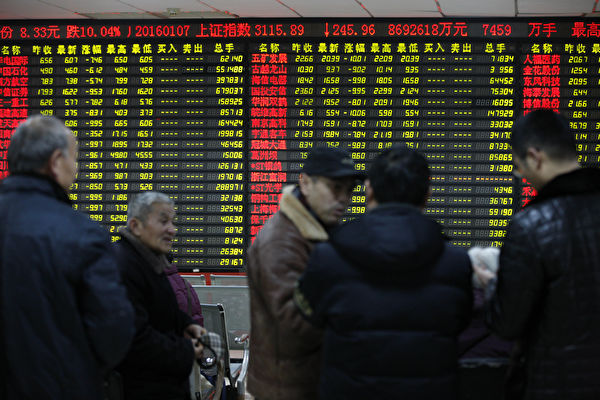On September 18, the Federal Reserve announced a significant rate cut of 50 basis points, the first such cut in over four years, setting the target range at 4.75% to 5%. Despite hopes from investors, the stock market in mainland China did not experience the desired surge but rather showed weak gains. Analysts point out that the challenging economic situation in China, as reflected in the stock market, lacks a solid foundation for a comprehensive rise. Some private fund managers even suggest that the current minor uptrend may be a form of “duping” investors.
On September 19, the main indexes in China saw modest gains, with the Shanghai Composite Index rising by 0.69% to close at 2,736 points, the Shenzhen Component Index up by 1.19%, the Growth Enterprise Index increasing by 0.85%, and the Science and Technology Innovation 50 Index rising by 0.63%. By the close of trading, 4,799 individual stocks had risen, with the trading volume increasing by 140 billion compared to the previous day.
Renowned private fund manager “Little Mao” expressed that while the Federal Reserve’s unexpected 50-basis-point rate cut was anticipated to boost the Chinese stock market, what unfolded on September 19 was far from the anticipated bullish market surge. The market showed feeble gains and exhibited a suspiciously artificial rhythm.
He pointed out that while the stock market seemed to be rising overall, the momentum was notably weak and lackluster. Both the Shanghai and Growth Enterprise indexes only saw marginal increases, with the former even experiencing a significant drop in the morning session. Despite a subsequent 30-point rise, the index later receded. The reported substantial increase in trading volume was still far from what is typically seen in a strong bull market, indicating a lack of confidence and a possible charade to lure investors in.
Analysis of the reasons behind the lackluster performance of the Chinese stock market points to the current economic situation in China. The economic fundamentals have not shown signs of improvement, failing to provide a solid foundation for a stock market bull run. Economic data released in August painted a grim picture of the Chinese economy, signaling ongoing challenges. In the absence of a fundamental turnaround, it is challenging for the stock market, considered a barometer of economic conditions, to experience a comprehensive upsurge.
Securities investment advisor and renowned figure “Dragon Coach” noted that on September 19, the market opened slightly higher in the morning but soon began a downward trend, with trading volume peaking within the first half-hour. By mid-morning, the market hit its daily high and then fluctuated downwards, particularly in the afternoon when trading activity dwindled significantly. The day’s trading volume reached just over 620 billion, a stark contrast to the over 430 billion traded in the morning session alone.
He observed that fluctuations in the indices indicated that while trading volume surged in the morning, it swiftly fell back in the afternoon, signaling that investors were quick to sell at higher levels due to waning market confidence and a lack of external fund inflows.
Furthermore, with the existing trading volume hovering around 600 billion, sustained upward movement in the stock indexes would require continuous volume expansion, which is currently lacking. Instead, the market may see a slight increase at its current position only to potentially falter after reaching a peak on the following day, in line with the prevailing downtrend. Each uptick in trading volume is followed by a more substantial downward trend, reinforcing the fragility of the A-share performance.

